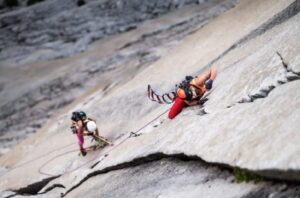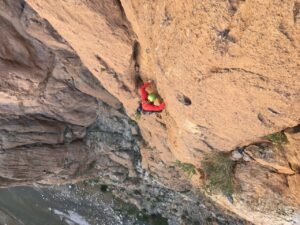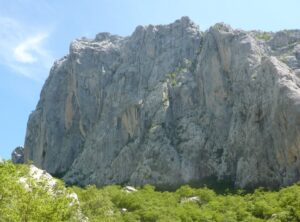In some cultures, the term “party hard” is taken to an extreme. These festivals are a far cry from family-friendly carnivals and instead embrace dangerous, and potentially fatal, thrill-seeking challenges. We take a look at five of the world’s more dangerous festivals.
Fiesta de los Martillos explosivos
Many countries have unique pre-Lenten traditions. From elegant carnivals dating back to the medieval period to pancake races, Shrove Tuesday, or Fat Tuesday, usually entails a last big hoorah before the solemn, reflective period of Lent in the Catholic tradition. In Mexico, they take this last hoorah to the next level. How? With explosive sledgehammers, of course.
In the small market town of San Juan de la Vega, residents celebrate Shrove Tuesday by honoring their patron saint San Juanito with an incredible demonstration of power. San Juanito is considered the Robin Hood of Mexico, he stole from rich local landowners to give to the poor. Some other sources say that San Juanito also protected the town from pesky outlaws. To honor his memory, residents established a festival in which they would reenact his victory over evil and corruption.
Over time, the festival evolved into quite a spectacle. Participants donned in protective gear would place a mixture of gunpowder, sulfur, and sometimes fertilizer on a hammer and smash it on a concrete beam. The result: a smoky fury of fragments, shards, and shrapnel. The largest explosion wins.
Ambulances and first aid officials remain on standby for the duration of the festival.
Cooper’s Hill cheese rolling
At Cooper’s Hill near Gloucester in England, cheese is dangerous. Every Spring Bank Holiday, a large wheel of Double Gloucester cheese causes absolute chaos. This steep hill (1:2 gradient) hosts a 600-year-old tradition in which approximately 20 participants race down the 180m slope after a four-kilogram wheel of cheese traveling at over 112kmph.
It’s hard to finish this downhill battle with cheese unscathed. Most competitors experience one of the following injuries: broken bones, concussion, kidney damage, or pulled muscles as they tumble and roll down the hill. Somehow, this does not stop people from around the world arriving to compete.
The goal is not to get the cheese but rather to get to the bottom of the hill first. Whoever wins, takes the Double Gloucester home. However, because of the number of injuries the cheese itself has caused, a light foam substitute is now used.

A reveler joins the traditional cheese rolling races on May 25, 2015, in Brockworth, UK.
Supposedly, the tradition could have pagan roots. Pagans would set wheels of hay on fire and roll them down a hill in a fertility ritual. We don’t know when, or why, these fiery wheels of hay were replaced with cheese.
There’s even a Michael Jordan of cheese-rolling. Since the early 2000s, Chris Anderson has won the competition 22 times.
Onbashira
In the city of Suwa in Japan, the Onbashira festival takes place every six years. Towering tree trunks or pillars from four main shrines (Honmiya, Maemiya, Harumiya, and Akimiya) need replacing, symbolizing a period of renewal and rejuvenation. Locals cut down around 16 fir trees measuring up to 19m and transport them by riding them down a rugged and uneven mountainside. When they reach the base, they stay there for a month before locals erect the multi-ton posts at the shrine.

Riding logs down the mountainside. Photo: Shimosuwa City Hall
The festival has two parts, one in April and another in May. Yamadashi refers to the felling and riding of the logs and the ride is called Kiotoshi, which young men undertake to prove themselves to society. A month later, the second part called Satobiki begins. Locals erect the logs using ropes, putting up four posts at each corner of the shrine. Several fatal incidents prompted the festival’s deadly reputation; people have drowned, fallen, and been crushed by the logs.
Though the festival’s origins remain a mystery, some researchers believe the wooden posts might serve as totem poles or could be linked to the Chinese belief in five earthly elements.
Thaipusam
Every January, Tamil Hindus come together on the night of a full moon to pay homage to the goddess Parvati and her son Murugan. In Hindu mythology, Parvati is the goddess of power, motherhood, and love. Her son is the god of war. Parvati gave her son a heavenly weapon (most likely a spear) to defeat his enemy Surapadman.
Penance and repentance are important themes. Before the day of the festival, Hindus must fast and prepare for a painful ritual called kavadi.

Thaipusam in Kuala Lumpur. Photo: Tamil Selvam/Shutterstock
Kavadi includes the mortification of one’s flesh. The practitioner pierces their skin, tongue, cheeks, and face with thin skewers or hooks, which do not draw as much blood as one would think. This ritual tests mental and physical limits. If the practitioner endures the ritual with resilience to the pain, they show the community their great faith.
Usually, men undertake this ritual while women carry a pot of milk in a procession to the statue of Murugan. However, some women also volunteer to be pierced.
Baby jumping
In Spain, Spanish Catholics celebrate the liturgical feast day of Corpus Christi by literally jumping over newborn babies. This folk tradition, which takes place in the village of Castrillo de Murcia, includes lots of theatrics. Men dress in red and yellow costumes holding whips and castanets, they symbolize the Devil. They proceed to jump over newborns under 12 months old who lie on mattresses lined up on the street.

Baby jumping festival in Spain. Photo: Jtspotau/Wikipedia Commons
Each jump symbolizes cleansing the babies of original sin. This unconventional baptismal ritual would be many parents’ worst nightmare. However, by luck, or perhaps divine assistance, there have been no injuries since the 17th century.
However, the Catholic Church takes a dim view of the festival because of the dangers involved. The late Pope Benedict XVI discouraged the practice.






